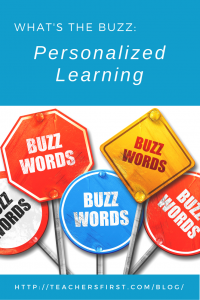 It’s easy to get terms confused, especially when they sound similar and are closely related. This is definitely the case with personalized and individualized learning. There are a few distinct differences that should help you remember how the two are very different.
It’s easy to get terms confused, especially when they sound similar and are closely related. This is definitely the case with personalized and individualized learning. There are a few distinct differences that should help you remember how the two are very different.
Personalized learning is learner centered. In this highly individualized method, students set their goals and then determine what they will do to learn the content and prove mastery. These highly customized learning paths are not scalable meaning that there is a real limit to the number of students that a teacher can accommodate with this method. Imagine a classroom with 25 students each setting their own goal and choosing which materials they might use to reach it. Add in each student’s idea of assessment and four core subjects, and you might have one very frazzled teacher trying to facilitate it all.
Individualized learning, on the other hand, is a bit more manageable. In this model, students follow the same learning path as set out by the teacher. The teacher makes modifications as necessary in content and pacing.
As is the case with most things in education, there are multiple paths for educators to get clarification on these terms. Here are a few resources to help you find out more:
- 7 Things you should know about personalized learning by Educause
- Personalized VS. Differentiated VS. Individualized learning chart by Barbara Bray and Kathleen McClaskey
- Personalized vs. differentiated vs. Individualized learning by Dale Basye


Personalized learning sounds like it would be great for so many children. However, as you mentioned in the blog, it would be difficult to do with a class full of students. I find that differentiating can be very time consuming when planning to meet the needs of all your students. I couldn’t imagine trying to do personalized learning with all 18 of my students.
I believe that in an ideal world “personalized learning” would be available to every student in every classroom. However, due to time constraints and management limitations, this type of learning is often not conducive to a typical classroom. However, if you are lucky enough to have a small number of students in your class, or have blocks of time which lend itself to exploration/experimentation, you might want to give it a try on a slightly smaller scale (example: provide students various choices for which materials they will use).
Instead, like other teachers, I have found that individualized learning is much more conducive to the typical classroom. The teacher can help guide students and meet them at their specific academic level. Ultimately, it is the individual growth of each child that matters. Some students may write multiple chapters while other students may only write a couple pages. The end product is not nearly as important as the growth that the specific child made during the process.